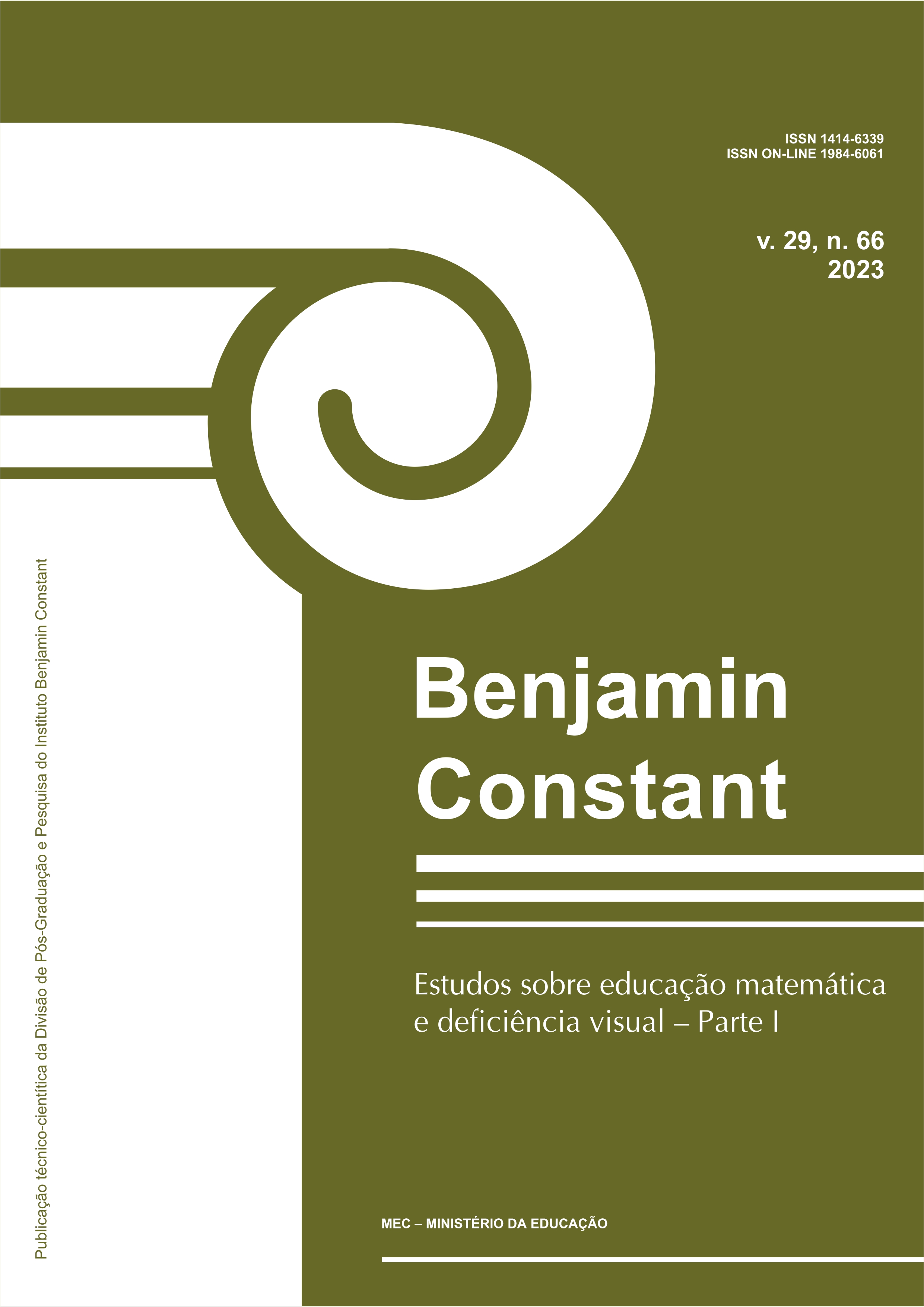Unraveling shapes for everyone
Learning geometry in an inclusive classroom
Abstract
This paper reports the experience and the repercussions of an activity using concrete materials to assist visually impaired students in learning geometric shapes in a regular classroom. A cooperative game was proposed, with manipulable material for teaching geometric shapes that worked with the names of the shapes, which had to be assembled on a board with low relief spaces. The game was applied to a third-grade class with 15 students, including one visually impaired, in a public state school in the city of Joinville, Brazil. The theoretical framework emphasizes the importance of sensory development to prepare the individual for the environment. The research is classified as basic, with a qualitative, descriptive, bibliographic approach, with data collection and analysis. The application was divided into six stages: environment preparation, activity introduction, first, second and third playing modes, and closing. In the first mode, each pair or trio had to draw a card with the name of a shape, identify it, and fit it on the board. In the second one, as a new challenge for the teams, one of the classmates in each pair or trio would be blindfolded when performing the activity. In the third and final mode proposed for the game, the two or three students were blindfolded and had to work at the same time to find the pieces, their corresponding places on the board and assemble them. As a result, not only the evolution of the students in identifying geometric shapes could be noticed, but also the promotion of inclusion of the visually impaired student, since sensory stimulation was always progressively present during the application of the game. At the end of the activity, during the closing and review, even the students who had trouble either reading the cards or associating the name with the shape were able to identify the shapes with the names, answer the questions and make associations with other everyday elements.
References
BOGDAN, Robert; BIKLEN, Sari Knopp. Investigação qualitativa em educação: uma introdução à teoria e aos métodos. Porto, Portugal: Porto, 1994.
BRASIL. Lei nº 13.146, de 06 de julho de 2015. Institui a Lei Brasileira de Inclusão da Pessoa com Deficiência (Estatuto da Pessoa com Deficiência). Brasília, DF: Presidência da República, 2015. Disponível em: https://bit.ly/38oANtk. Acesso em:16 mar. 2023.
BRASIL. Ministério da Educação. Saberes e práticas da inclusão: desenvolvendo competências para o atendimento às necessidades educacionais especiais de alunos cegos e de alunos com baixa visão. 2. ed. Brasília, DF: MEC: Secretaria de Educação Especial, 2006. Disponível em: http://portal.mec.gov.br/seesp/arquivos/pdf/alunoscegos.pdf. Acesso em: 16 mar. 2023.
BROTTO, Fábio. Otuzi. Jogos cooperativos: o jogo e o esporte como um exercício de convivência. 1999. Dissertação (Mestrado em Educação Física) – Universidade Estadual de Campinas, Campinas, 1999.
FERRARINI, Rosilei; SAHEB, Daniele; TORRES, Patricia Lupion. Metodologias ativas e tecnologias digitais: aproximações e distinções. Revista Educação em Questão, Natal, v. 57, n. 52, p. 1-30, e-15762, abr./jun. 2019.
GOMES, Ana Paula Sartori et al. Desvendando formas: um jogo inclusivo para o ensino de matemática. In: ENCONTRO NACIONAL DE EDUCAÇÃO MATEMÁTICA, 14., 2022, [s. l.]. Anais […]. [S. l.]: Sociedade Brasileira de Educação Matemática, 2022. p. 1-10.
GOMES, Ana Paula Sartori; LIMA, Lilian Spieker Rodrigues de; FIGUEIREDO, Elisandra Bar de. Materiais concretos e o ensino de formas geométricas: experiência com um aluno cego. In: CONGRESSO INTERNACIONAL MOVIMENTOS DOCENTES; COLÓQUIO FORPIBID RP, 2022, Diadema. Anais […]. Diadema: UNIFESP, 2022. v. 1, p. 1054-1061.
KAMII, Constance. A criança e o número: implicações educacionais da teoria de Piaget para a atuação junto a escolares de 4 a 6 anos. 25. ed. Campinas: Papirus, 1998.
KOEPSEL, Ana Paula Poffo. Materiais didáticos no ensino de Matemática para estudantes com deficiência visual. In: ENCONTRO BRASILEIRO DE ESTUDANTES DE PÓS-GRADUAÇÃO EM EDUCAÇÃO MATEMÁTICA, 2016, Curitiba. Anais [...]. Curitiba: Sociedade Brasileira de Educação Matemática, 2016.
KOEPSEL, Ana Paula Poffo; SILVA, Viviane Clotilde da Silva da. Uso de materiais didáticos instrucionais para inclusão e aprendizagem matemática de alunos cegos. Revista BOEM, Joinville, v. 6, n. 11, p. 413-431, out. 2018. DOI: 10.5965/2357724X06112018413.
MONTESSORI, Maria Tecla Artemisia. Pedagogia científica: a descoberta da criança. São Paulo: Editora Flamboyant, 1965.
ORLICK, Terry. Vencendo a competição. São Paulo: Círculo do Livro, 1989.
RAUPP, Andrea Damasceno; GRANDO, Neiva Ignês. Educação matemática: em foco o jogo no processo ensino-aprendizagem. In: BRANDT, Celia Finck; MORETTI, Méricles Thadeu (org.). Ensinar e aprender matemática: possibilidades para a prática educativa. Ponta Grossa: Editora UEPG, 2016. p. 63-83.





.png)
